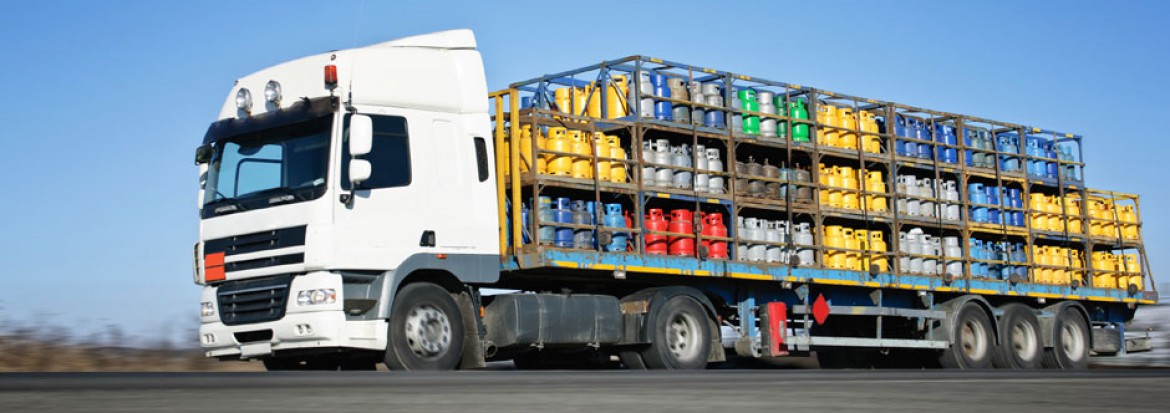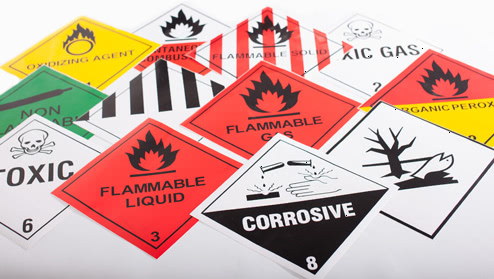Dangerous Goods
An Insight into the Australian Dangerous Goods (ADG) Code
We know the Dangerous Goods regulations can sometimes be a little bit confusing, so we’ve compiled this answer to the most common questions we get. In fact, close to 300 people a month Google these questions in Australia so you aren’t alone. If you’re still unsure about anything after reading this page, give us a call and we’d be more than happy to help.

What are dangerous goods?
Dangerous goods are substances or materials that have explosive, flammable, toxic, infectious, or corrosive properties. If not handled properly, they pose a potential hazard to human health and safety, property, and the environment.
The transport of dangerous goods is controlled and governed by a variety of regulatory regimes, operating both at the national and international level. The United Nations set international principles to ensure global standards of safety and to provide a framework to which national regulatory bodies can conform. In Australia, regulations applicable to dangerous goods transport are outlined in the Australian Dangerous Goods (ADG) Code.
Each type of dangerous goods is assigned a number known as its UN Number; for example, petrol is UN 1203. The United Nations number (UN number) is a 4-digit numbering system developed by the United Nations for quick identification of dangerous goods.
The most common dangerous goods include fuels such as petrol, aviation gasoline, and LPG, agricultural products like insecticide and fertilisers, and compressed or liquified gases. Dangerous goods are also commonly found as components of larger products such as lithium batteries or pyrotechnic devices.
To detrmine whether a product is a dangerous good, you can check its lable, its shipping or transport documents, or the product's safety data sheet.
What is a Dangerous Goods (DG) licence?
A dangerous good licence is legally required to drive a vehicle carrying bulk quantities of dangerous goods in Australia. For example, a dangerous goods licence is required to drive a large fuel tanker or a truck carrying petrol, LPG, or compressed oxygen.
You need a dangerous goods licence when transporting dangerous goods in any of the following quantities:
- In a receptacle with a capacity of more than 500L.
- If there is more than 500kg in a single receptacle.
- In the case of intermediate bulk containers (IBCs), where the total capacity of all IBCs is more than 3000L or where any IBC is filled or emptied while on the vehicle.
If you are looking to transport dangerous goods in a truck, you may also be interested in our truck licence courses. If you’re not sure which licence is best for you, refer to our easy guide here. To drive fuel tanker in an articulated truck (one that has a pivot) requires at least a HC licence. Smaller vehicles such as those used to transport aviation fuel at the airport require only a medium rigid, or heavy rigid licence, depending on the size of the truck.
How are dangerous goods classified?
Dangerous goods are classified according to properties of the materials. Materials need to be grouped because they each pose unique threats and become dangerous in different environments. For example, sodium, potassium, and lithium react violently with water to produce hydrogen gas which is highly flammable. Other classes of dangerous goods may not react with water although instead with something else. Thus, due to the properties of each material, classes of dangerous goods are handled differently to protect the safety of people, property, and the environment.
How many classes of dangerous goods are there?
There are 9 classes of dangerous goods which are classified as follows:
- Class 1: Explosives
- Class 2: Gases
- Class 3: Flammable liquids
- Class 4: Flammable solids; substances liable to spontaneous combustion; substances which, on contact with water emit flammable gases
- Class 5: Oxidising substances and organic peroxides
- Class 6: Toxic and infectious substances
- Class 7: Radioactive materials
- Class 8: Corrosive substances
- Class 9: Miscellaneous dangerous substances and articles
Each dangerous goods class is represented by a placard- a distinct and specific label in the shape of a diamond. For example:

How to transport Class 7 Dangerous Goods?
Class 7 (radioactive materials) was recently taken off the ADG code although remains listed in Chapter 1.5 of the UN Model Regulations. Thus, the transport of Class 7 materials is regulated and governed by the UN rather than the ADG Code. The transport of Class 7 is only subject to the ADG code when it is being transported on the same vehicle as dangerous goods of other classes. In scenarios where Class 7 dangerous goods are on the same vehicle, segregation requirements apply which can be found in Part 9 of the ADG code. The ADG code is relatively easy to understand and the most recent edition (7.7) can be found here. The latest UN Model Regulations can also be read here. Of course, if you have any more questions, give us a call!
What is a hazardous chemical?
Hazardous chemicals (hazchem) is the name given to a group of chemicals that are hazardous in the workplace according to the globallised system for the classification and labelling of chemicals (GHS). When hazardous chemicals are used in the workplace, they fall under the WHS regulation rather than the ADG code which deals specifically with transport regulation.
Do I need a dangerous goods licence?
In some cases you can transport certain small quantities of dangerous goods used as 'tools of trade' or for personal use without a dangerous goods licence. For example, a pool owner may transport pool chlorine from the pool shop, a painter may transport paints used in their business activities, and a BBQ owner can take an LPG bottle home.
Larger quantities of dangerous goods may require a licence. It is important to remember that even when you carry small quantities, it is still important to ensure your goods are stored, loaded, secured, segregated, transported, and unloaded safely.
How much dangerous goods can I transport?
A dangerous goods driver licence is only required for transport of dangerous goods in the following cases:
- In a receptacle with a capacity of more than 500L.
- If there is more than 500kg in a single receptacle.
- In the case of intermediate bulk containers (IBCs), where the total capacity of all IBCs is more than 3000L or where any IBC is filled or emptied while on the vehicle.
The QLD government has a useful table on their website which can ne found here. Keep in mind this applies to QLD and not NSW, but it is helpful to picture the how much of a dangerous good you may transport in a car without a dangerous goods licence.
How to get a Dangerous Goods (DG) licence?
Here at 123 Training Solutions, we offer Dangerous Goods courses in Newcastle, Sydney, Brisbane, Tamworth, Broken Hill, Murwillumbah, Moree, Dubbo, Coffs Harbour, and Lismore. See below links for more information, dates, as well as how to make a booking.
All our courses result in a NSW Dangerous Goods licence except those in Brisbane, which can be used to apply for a QLD Dangerous Goods licence. All state licences are recognised across the country although are issued by different state bodies. The NSW dangerous goods licence lasts 5 years whereas the QLD licence lasts only 3 years. Like a car licence, you will need to obtain your dangerous goods licence in the state you live and you must show proof of residence upon application.
The path to a NSW dangerous goods licence has 5 easy steps:
- Step 1: Fill in the first section of the application form.
- Step 2: Take the application form to your GP to conduct a medical fitness examination. Your GP will then sign off on the corresponding section of the application form.
- Step 3: Get an RMS Driving History Report issued in the last 6 months from an RMS office (not online) - needs to be stamped.
- Step 4: Book in to complete the training course here at 123 Training Solutions. We will fill in our section of the application form.
- Step 5: Send the completed application form and pay the $57 application fee to the NSW EPA. You can do this either online through the EPA's online portal (which is our recomendation), or alternatively you can send them physical paperwork. If you send physical paperwork then you'll also need to attach a copy of the front and back of your driving licence and two passport photos. For more information about what to include and where to send it, refer to the instructions on the application form. Page 5 has a really good summary of everything that you'll need
Note that you don't have to do everything above in that exact order - you can do the training course with us first and sort the rest after - it's totally upto you. Then only thing to keep in mind is when you submit your application to the EPA everthing will need to be less than 6 months old at that time.
If you are applying for a QLD dangerous goods licence then the process is much the same as above, however in Queensland you apply through the Department of Transport and Main Roads (TMR). The main difference for QLD is that you will also need a criminal history check, and a copy of your statement from attainment form us to show you've completed the two day course. There is a good summary, and instructions for how to apply for a QLD dangerous goods licence on the Queensland Governement Website here.
How much is a dangerous goods licence?
Here at 123 Training Solutions, we charge $575 for the 2-day training course. There is a separate licence application fee that get's paid to the EPA in NSW or the Departement of Transport and Main Roads in QLD.
If you want to complete your practical training, give us a call and we can book you into the next course that suits you! Otherwise you can send us an email to info@123trainingsolutions.com.au